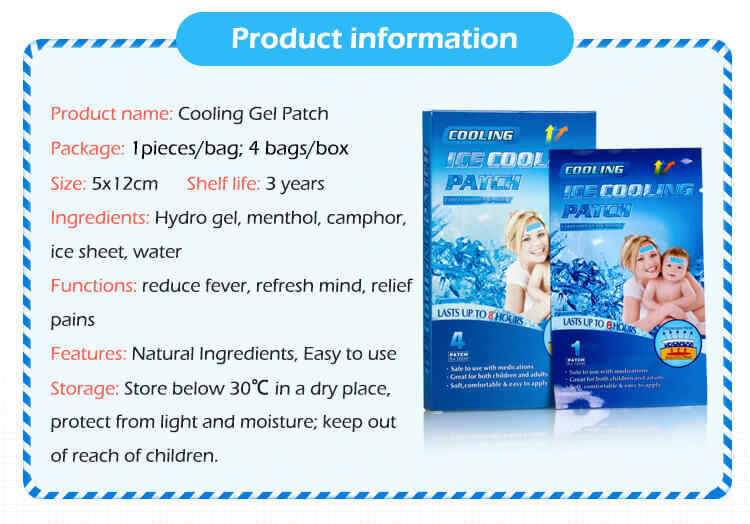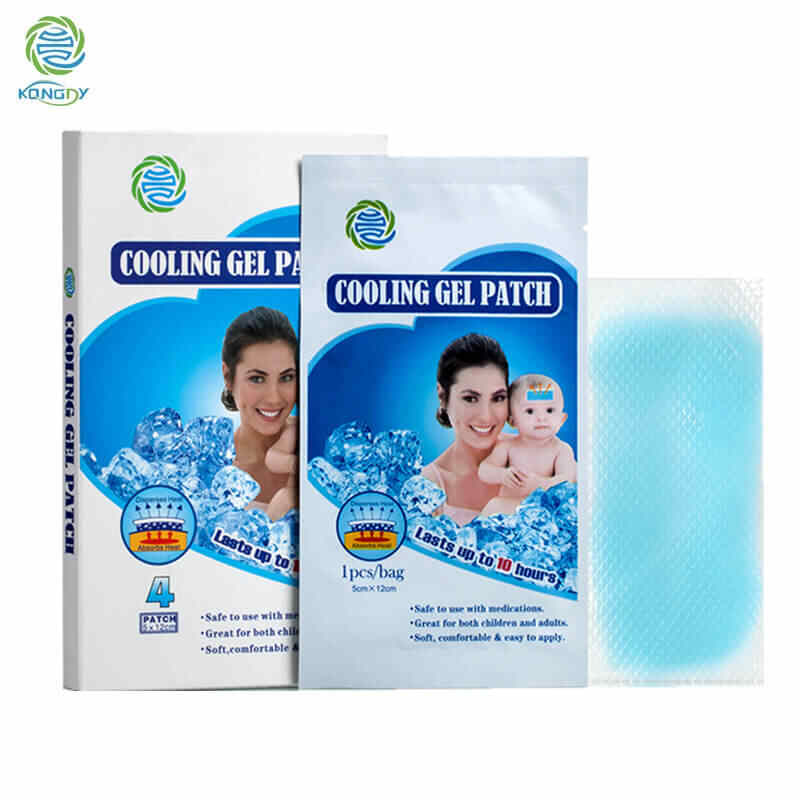Menthol Cooling Patches OEM: How to Meet Regulatory Requirements Across Markets?
The global demand for cooling patches has surged due to their convenience, fast relief, and non-invasive nature. Among them, menthol cooling patches stand out as a widely accepted solution for fever management, minor injuries, muscle discomfort, and daily wellness. For businesses entering this sector, partnering with a menthol cooling patches Manufacturer through OEM (Original Equipment Manufacturing) is an effective way to launch products under your own brand.
However, navigating regulatory requirements across different markets can be challenging. Countries vary in classification—some may treat menthol cooling patches as medical devices, others as consumer healthcare products, and some as cosmetics. This article provides a comprehensive guide on how menthol cooling patches OEM brands can meet compliance standards globally while ensuring market success.

1. Understanding Product Classification in Global Markets
Before entering any market, brands working with a menthol cooling patches Supplier must identify how their products are classified:
United States (FDA) – Menthol cooling patches may fall under the OTC drug monograph system if they contain menthol at specific concentrations.
European Union (EMA & CE Marking) – They can be considered medical devices if marketed for fever reduction or pain relief, requiring CE certification.
China (NMPA) – Products may be treated as Class I or Class II medical devices, depending on their intended use.
Japan (PMDA & quasi-drugs) – Cooling patches often fall under quasi-drug categories, which require local approval.
Understanding classification ensures you select the right menthol cooling patches OEM strategy from the start, preventing costly delays.
2. Key Regulatory Requirements to Consider
A. Ingredient Compliance
Menthol is the primary active ingredient, and its allowed concentration varies.
In the U.S., menthol in patches typically ranges from 1.25%–16% depending on indication.
In the EU, limits may differ under both cosmetic and medical device directives.
Manufacturers must ensure raw materials are safe, traceable, and sourced from approved suppliers.
B. Manufacturing Standards
GMP (Good Manufacturing Practice) is essential for all menthol cooling patches Manufacturers.
ISO certifications, such as ISO 13485 for medical devices, are often mandatory.
Cleanroom production and quality management systems ensure compliance with strict standards.
C. Packaging & Labeling Rules
Must include product purpose, instructions, warnings, and storage conditions.
Multilingual labeling is required for international distribution.
Private Label menthol cooling patches must still follow regulatory labeling standards, even under different brand names.
D. Safety & Clinical Evidence
Stability testing ensures patches remain effective within shelf life.
Clinical evaluations may be required to prove cooling effectiveness and skin safety.
Safety tests include skin irritation, sensitization, and patch adhesion studies.
3. Challenges in Meeting Regulatory Requirements
Different Market Interpretations
One of the biggest hurdles is that each authority interprets menthol cooling patches OEM differently. What is considered a medical device in Europe might be classified as an OTC drug in the U.S.
Documentation Burden
Brands must prepare technical files, safety dossiers, and clinical data, which can be resource-intensive.
Private Label Limitations
While Private Label menthol cooling patches offer flexibility, the regulatory responsibility still lies with the brand owner. If requirements are not met, liability risks increase.
4. Best Practices for Compliance in Menthol Cooling Patches OEM
A. Partner with an Experienced Manufacturer
Choosing a reliable menthol cooling patches Manufacturer with global compliance experience is critical. Leading suppliers often maintain multi-region certifications, making the registration process smoother.
B. Customize Formulas for Market Needs
Different regions have unique requirements. Custom menthol cooling patches allow you to adapt menthol concentration, patch size, and claims according to regulations.
C. Prepare Documentation Early
Maintain a comprehensive regulatory dossier, including ingredient specifications, safety reports, and manufacturing certifications.
D. Conduct Market-Specific Testing
Investing in clinical validation not only ensures compliance but also boosts consumer trust.
E. Stay Updated on Regulatory Changes
Regulations evolve—brands should regularly monitor updates from FDA, EMA, NMPA, and PMDA.
5. The Role of OEM and Private Label in Regulatory Success
Menthol cooling patches OEM enables businesses to outsource manufacturing while ensuring regulatory compliance.
Custom menthol cooling patches give flexibility in adjusting to regulatory needs.
Private Label menthol cooling patches empower brands to expand globally without establishing their own factory, provided they align with labeling and safety requirements.
Working with an experienced menthol cooling patches Supplier ensures smooth navigation of documentation, audits, and inspections.
6. Strategic Advantages of Regulatory Compliance
A. Faster Market Entry
Compliance reduces delays during customs checks and product registration.
B. Improved Brand Credibility
Consumers trust products that meet international safety standards.
C. Expansion Opportunities
With regulatory compliance, your Private Label menthol cooling patches can be exported across multiple markets without reformulation.
D. Reduced Legal Risks
Compliance minimizes recalls, penalties, and reputation damage.
Conclusion
Meeting regulatory requirements is not just a legal obligation—it is the foundation for long-term success in the menthol cooling patches OEM industry. By working with an experienced menthol cooling patches Manufacturer, investing in documentation, and customizing products to fit diverse market standards, businesses can confidently expand globally.
Whether you’re launching Custom menthol cooling patches or scaling with Private Label menthol cooling patches, regulatory readiness ensures credibility, safety, and market competitiveness. Choosing a knowledgeable menthol cooling patches Supplier is your first step toward achieving compliance and building a trusted brand.
Related Questions & Answers
Q1: How do I choose the right menthol cooling patches Manufacturer for compliance?
A1: Look for manufacturers with ISO certifications, GMP facilities, and global market experience.
Q2: Can Private Label menthol cooling patches be sold internationally?
A2: Yes, but labeling, ingredient compliance, and documentation must meet local regulations.
Q3: What testing is required for menthol cooling patches OEM products?
A3: Common tests include skin irritation, stability, safety, and adhesion studies.
Q4: Are Custom menthol cooling patches necessary for different markets?
A4: Often yes, as different countries have specific concentration limits and claims restrictions.
Q5: What happens if regulatory requirements are not met?
A5: Non-compliance can lead to fines, recalls, customs rejection, or even brand reputation damage.






